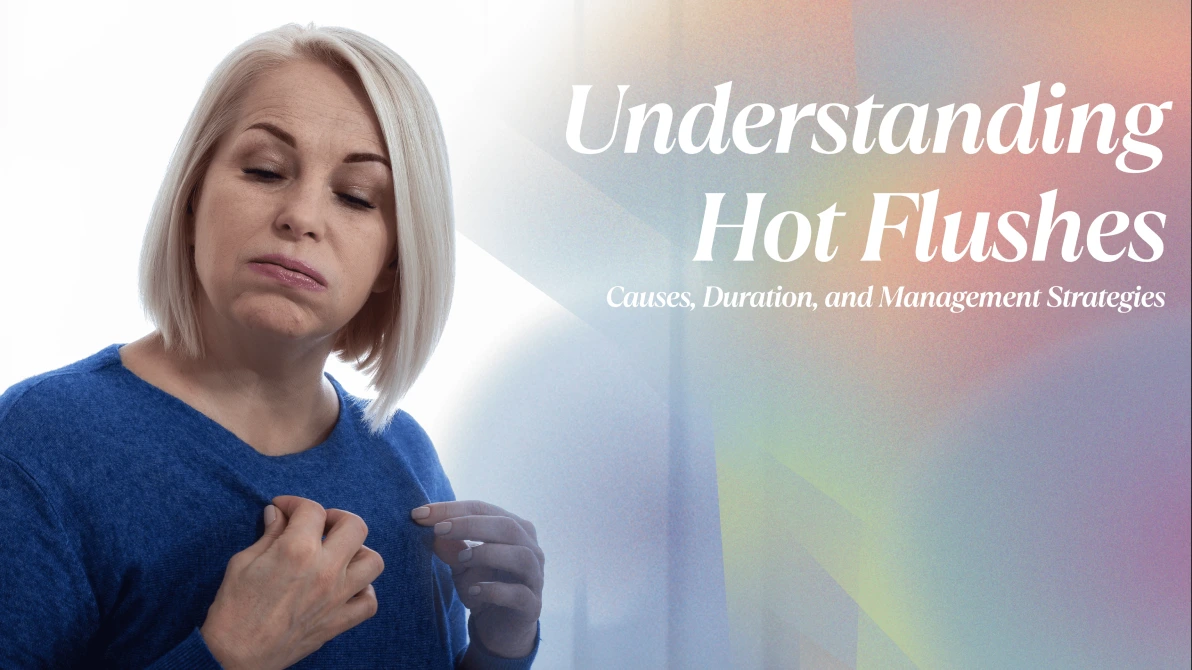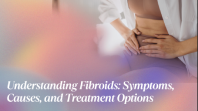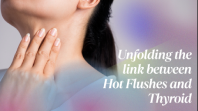Understanding Hot Flushes: Causes, Duration, and Management Strategies
October 20, 2024

Hot flushes are a common symptom of menopause that many women dread. Characterised by sudden feelings of warmth, often described as “hot flush sweating,” these episodes can be uncomfortable and disruptive. In this article, we’ll explore the causes, duration, and effective management strategies for hot flushes.
What Are Hot Flushes?
Hot flushes, or hot flashes, are sudden sensations of intense heat. They typically affect the upper body, including the face, neck, and chest.
These episodes can last anywhere from a few seconds to several minutes and may be accompanied by:
- Sweating (often referred to as hot flush sweating)
- Rapid heartbeat
- Chills (as the flush subsides)
Women often describe the sensation as overwhelmingly hot, creating a “flush hot” feeling. The unpredictability of these episodes can make them particularly challenging to manage in everyday life.
What Causes Hot Flushes?
The primary culprit behind hot flushes is the hormonal changes that occur during menopause. As oestrogen levels drop, the hypothalamus—our body’s temperature control centre—becomes more sensitive. Even slight increases in body temperature can trigger a hot flush.
Other contributing factors include:
- Medications: Certain medications, especially hormone therapies, can either cause or worsen hot flushes.
- Lifestyle Choices: Smoking, alcohol consumption, and caffeine intake have been linked to more frequent and intense hot flushes.
How Long Do Hot Flushes Last?
A common question women ask is, "When do hot flushes stop?" The duration can vary significantly from woman to woman.
On average, women experience hot flushes for about 7.4 years, but some may experience them for over a decade, starting in perimenopause and continuing into postmenopause.
Factors influencing the duration and severity of hot flushes include:
- Genetics: Family history can play a role in how long you experience symptoms.
- Overall Health: Conditions like obesity and chronic diseases may prolong the experience of hot flushes.
Managing Hot Flushes: Tips and Strategies
While hot flushes can be uncomfortable, several effective strategies can help manage symptoms:
1. Lifestyle Changes
Diet: A balanced diet rich in fruits, vegetables, and whole grains can help alleviate symptoms. Some women find relief by avoiding spicy foods, caffeine, and alcohol.
Exercise: Regular physical activity—aiming for at least 150 minutes per week—can improve overall health and reduce the frequency of hot flushes. It may also help combat weight gain, which can exacerbate hot flush sweating.
2. Mind-Body Techniques
Practices such as yoga, meditation, and deep breathing can help manage stress and reduce the occurrence of hot flushes. These techniques promote relaxation and create a sense of calm.
3. Hormone Replacement Therapy (HRT)
For some women, HRT can be an effective treatment option. This therapy involves taking medications containing female hormones to replace those that the body no longer produces after menopause.
Discuss the benefits and risks of HRT with your healthcare provider, as this treatment isn't suitable for everyone.
4. Non-Hormonal Medications
If HRT isn't an option, some medications, such as selective serotonin reuptake inhibitors (SSRIs) and gabapentin, can help reduce hot flushes. Always consult your healthcare provider to explore these options.
5. Alternative Therapies
Many women seek relief through alternative therapies, including acupuncture, herbal supplements, and homeopathy. While some may find these treatments beneficial, it’s crucial to consult with a healthcare provider before trying them.
When to Seek Medical Advice
If hot flushes are disrupting your daily life or are accompanied by other concerning symptoms, it's important to seek medical advice. A healthcare provider can help determine the most effective treatment plan tailored to your needs.
Conclusion
Hot flushes are a common and often uncomfortable symptom of menopause, but understanding their causes and exploring various management strategies can empower you to cope effectively.
Although they can persist for several years, lifestyle changes, mind-body techniques, hormonal treatments, and alternative therapies can provide significant relief. By seeking information and support, you can navigate this transition with confidence and comfort.



























